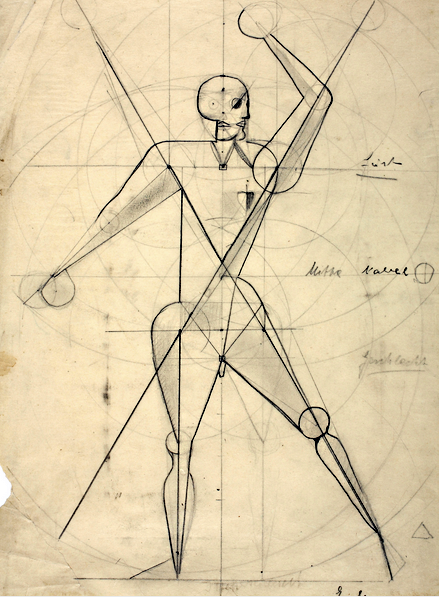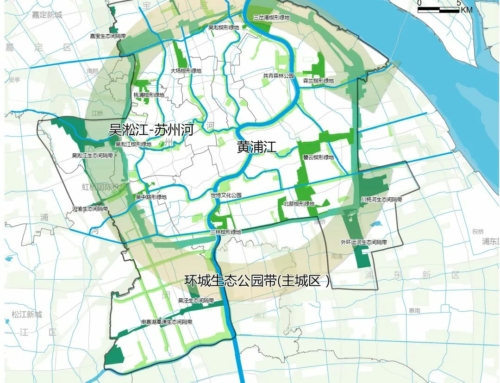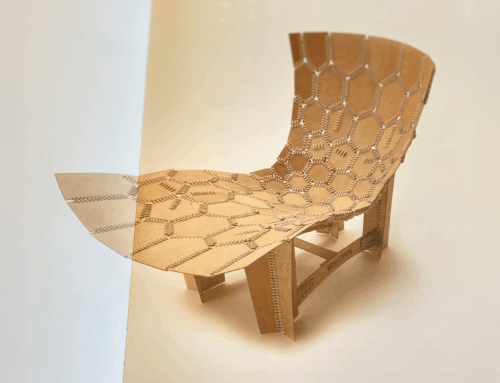To mark its centenary year, the Bauhaus published Design Rehearsals: Conversations About Bauhaus Lessons. My contribution was a response to images from Oskar Schlemmer’s class on ‘The Human’. I’m re-posting it now on the occasion of the @BauhausSeas launch event on 20 May.
No textbook for the new foundation course exists – which is probably just as well. The course is better thought of as a journey, than as a body of knowledge. The journey is neither short, nor easy. Its destination cannot be known in advance. No pathway has been laid to ease our way. And the autonomous individual is no longer the focus of the story. “Voyager, there are no bridges, one builds them as one walks” writes Gloria E. Anzaldúa for whom life-centered design could as well be thought of as weaving, as walking. “We humans need to be nepantleras – bridge builders and reweavers of relationality”
The Man portrayed in these images is a lonely one. A preoccupation with the human being as an autonomous subject must have felt liberating at the time – but today these images speak of abstraction and ecological indifference. They remind us of what we have lost: Situated and embodied experiences that once gave us meaning – a sense of connection to each other, and with the living world. The sadness evoked by these images can also be productive: they contain the seeds of a Vorkurs, or Foundation Course, to replace what has been lost.
This course would foster ecological literacy, and a whole-systems understanding of the world. It would reunite two worlds that have been sundered: wisdom traditions from other places and times, and the latest insights of systems thinking and complexity science. The course would expose students to complex interactions between life-forms, rocks, atmosphere, and water.
It would help them discover that the entire Earth is animated by interactions among systems at different geographical and temporal scales.
The experience of mapping biotic communities would teach them that everything is connected – from sub-microscopic viruses, to the vast subsoil networks that support trees.
Art, in the new course, would ensure that students connect with living systems emotionally, and not just rationally. By making students curious about “what we’re inside of”, in the words of Nora Bateson, art would teach students to explore complex interdependencies with joy – even when they remain perplexed. By making them aware of the power of small actions to transform the bigger picture, art would also foster activity – not just awareness, or introspection.
Many core elements of such a course already exist. Pockets of vitality can be found wherever students are attentive to the relationships between living organisms and their environment. Ilya Prigogene described such experiments as ‘small islands of coherence’ in an otherwise chaotic world. http://thackara.com/notopic/industrial-production-is-not-the-purpose-of-life/ Caring for life – and its interdependence with the nonhuman world – is a new source of value on these islands. And because ecological practice involves new ways of thinking about connection, patterns and context, the new course would bring designers quite naturally in contact with adjacent disciplines such as climatology, hydrology, geography, psychology, history, and many more.
Design Rehearsals: Conversations About Bauhus Lessons is edited for the Bauhaus Dessau Foundation by Katja Klaus and Regina Bittner. The book includes texts by: Ludowig Balland, Stefani Bardin, Jan Boelen, Anna Bokov, Otto von Bush, Clare Butcher, Alison Clarke, Laura Forlano, Corinne Gisel, Susanne Hauser, Carolin Höfler, Tom Holert, Tim Ingold, Joachim Krausse, Marion von Osten, Nina Paim, Judith Raum, Tai Smith, Gabrielle Schleijpen, Wolfgang Schäffner, Sam Thorne, John Thackara, Franciska Zólyom.





